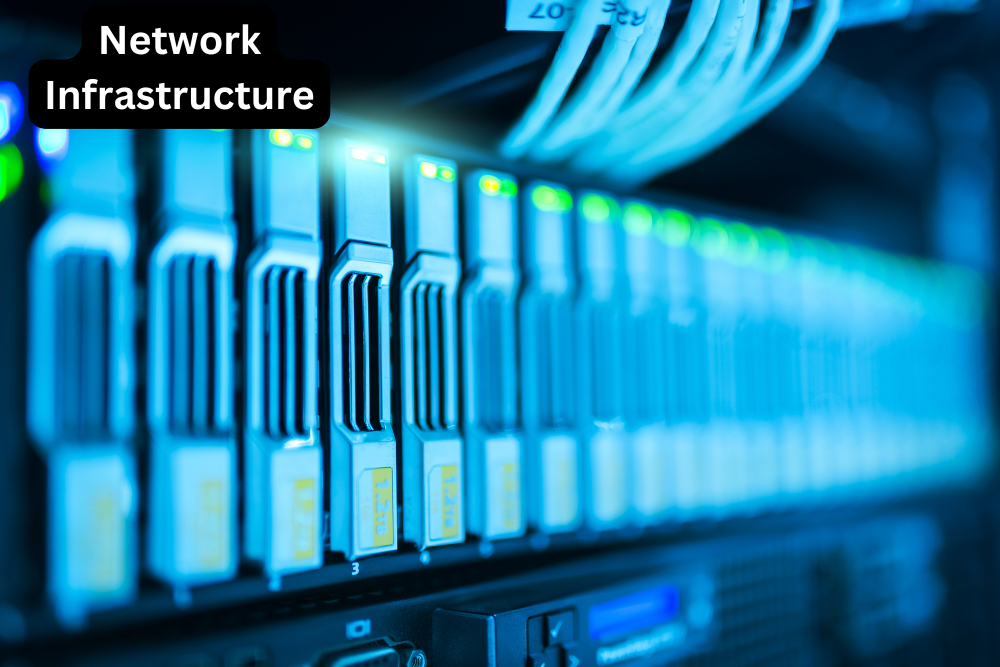Network Infrastructure: The Backbone of Modern Connectivity

In today’s interconnected world, network infrastructure is the foundation that supports communication, data transfer, and business operations. Whether you are a small business, a multinational corporation, or an individual relying on seamless connectivity, understanding network infrastructure is critical. This comprehensive guide will explore the components, types, benefits, challenges, and trends in network infrastructure, helping you build a robust system for your organization.
What is Network Infrastructure?
Network infrastructure refers to the collection of hardware, software, and protocols that enable communication and connectivity within a network. It encompasses everything Network Infrastructure to virtual systems that support the flow of data, ensuring reliability, security, and efficiency.
Components of Network Infrastructure
To build a robust network infrastructure, various components must work in harmony.
1. Hardware
- Routers and Switches: Direct and manage data traffic between devices.
- Cabling: Ethernet, fiber-optic, and coaxial cables provide physical connections.
- Servers: Host applications, data, and services.
- Firewalls: Protect the network from unauthorized access and cyber threats.
- Access Points: Enable wireless connectivity for mobile devices.
2. Software
- Operating Systems: Manage hardware resources and applications.
- Network Management Tools: Monitor, analyze, and optimize network performance.
- Security Software: Includes antivirus, VPNs, and intrusion detection systems.
3. Protocols
- IP (Internet Protocol): Governs data exchange across networks.
- HTTP/HTTPS: Facilitates web communication.
- FTP/SFTP: Handles file transfers.
- DNS: Resolves domain names into IP addresses.
Types of Network Infrastructure
Different organizations require different types of networks based on their size, goals, and operations.
1. Local Area Network (LAN)
A LAN connects devices within a limited area, such as an office or home.
2. Wide Area Network (WAN)
WANs connect multiple LANs over large geographical distances, often using the internet or private links.
3. Wireless Network
Uses Wi-Fi or cellular technology for wireless connectivity, suitable for mobile users and IoT devices.
4. Cloud Network
Cloud-based infrastructures host applications and services, offering scalability and remote accessibility.
5. Data Center Networks
Highly secure and efficient networks designed to support data centers and enterprise applications.
Benefits of a Robust Network Infrastructure
1. Seamless Communication
Facilitates real-time communication through emails, video calls, and instant messaging.
2. Increased Productivity
Enhances workflow efficiency by enabling employees to access resources and collaborate effectively.
3. Enhanced Security
A well-designed network incorporates advanced security measures to safeguard sensitive data.
4. Scalability
Network infrastructure can grow alongside your business, accommodating new devices and technologies.
5. Cost Efficiency
Optimized networks reduce downtime and operational costs, maximizing return on investment.
Steps to Building a Network Infrastructure
Creating a reliable network infrastructure requires careful planning and execution.
1. Assess Your Needs
Identify the size, purpose, and future requirements of your network.
2. Design the Architecture
Plan the layout, including hardware placement, connection types, and redundancy measures.
3. Choose the Right Hardware and Software
Select devices and tools that match your needs and budget while considering compatibility and scalability.
4. Implement Security Measures
Incorporate firewalls, encryption, and authentication protocols to protect your network.
5. Deploy and Test
Install the network, conduct thorough testing, and resolve any issues to ensure optimal performance.
6. Monitor and Maintain
Use network management tools to monitor traffic, detect anomalies, and perform regular updates.
Challenges in Network Infrastructure
Despite its benefits, managing network infrastructure comes with its own set of challenges.
1. Cybersecurity Threats
Networks are vulnerable to malware, phishing, and DDoS attacks, requiring constant vigilance.
2. Scalability Issues
Growing businesses may struggle to expand their networks without downtime or disruptions.
3. High Initial Costs
Building a robust infrastructure requires significant investment in hardware, software, and expertise.
4. Maintenance and Upgrades
Regular updates are necessary to keep up with evolving technology and security standards.
5. Complexity in Management
Larger networks require skilled IT professionals to manage and optimize performance.
Trends in Network Infrastructure
The field of network infrastructure is continually evolving, driven by advancements in technology.
1. 5G Networks
The rollout of 5G is revolutionizing connectivity, offering higher speeds and lower latency.
2. Software-Defined Networking (SDN)
SDN decouples network management from hardware, enabling centralized control and flexibility.
3. Edge Computing
Processing data closer to its source reduces latency and improves efficiency, especially for IoT devices.
4. Artificial Intelligence (AI)
AI-driven analytics and automation enhance network performance and security.
5. Green Networking
Energy-efficient technologies and practices are becoming a priority to reduce environmental impact.
Future of Network Infrastructure
As businesses and individuals demand faster, more reliable, and secure networks, the future of network infrastructure looks promising:
- Hyper-Connectivity: IoT and smart devices will increase the demand for seamless network integration.
- Quantum Networking: Emerging quantum technologies promise unprecedented data transfer speeds and security.
- Automation: AI-powered tools will continue to simplify network management.
Conclusion Building a Strong Network Foundation
Network infrastructure is the backbone of modern technology, enabling businesses to stay connected, secure, and competitive. Whether you’re setting up a small office or managing a global enterprise, investing in a robust and scalable network infrastructure is essential for success.
- Fashion
- Art
- Causes
- Crafts
- Dance
- Drinks
- Film
- Fitness
- Food
- Jogos
- Gardening
- Health
- Início
- Literature
- Music
- Networking
- Outro
- Party
- Religion
- Shopping
- Sports
- Theater
- Wellness
